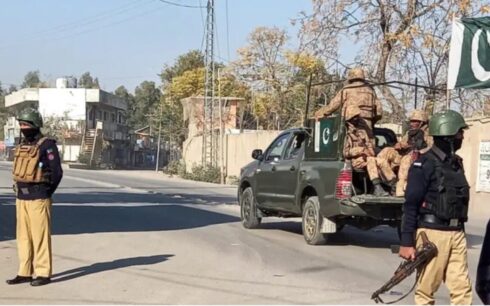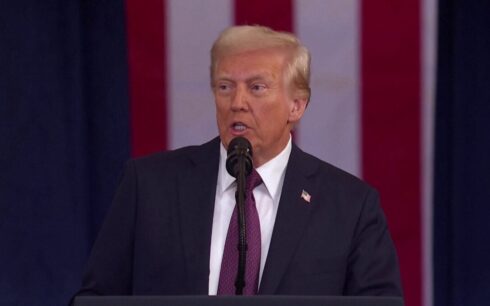Despite the United Nations and Western countries maintaining their refusal to recognize the Taliban as a legitimate government, Afghanistan’s neighbors are increasingly engaging with the group. The international community remains firm on key conditions, such as the right to education for girls, the right to work for women, and the preservation of basic freedoms, including freedom of speech, before it considers formal relations with the Taliban. However, Afghanistan’s neighbors seem less concerned with these conditions and are rolling out the red carpet for the Taliban, each eager to secure its own interests.
This divergence in approach between Afghanistan’s neighbors and the broader international community can be attributed to several factors:
1. Strategic competition in a volatile region
Although Afghanistan has not realized its potential as a regional economic crossroads, it has swiftly become a battleground for political and security competition. For the countries in the region, keeping a close watch on Afghanistan’s turbulent situation and the behind-the-scenes machinations is crucial. Neglecting a crisis-ridden country like Afghanistan poses greater risks than dealing with a stable one. Afghanistan remains a potential flashpoint where unforeseen events could give rise to immediate threats or foster adversaries for any given nation. The rapid emergence of terrorist groups in unstable regions, such as the rise of ISIS, serves as a stark reminder of the potential for such developments to spill over into neighboring countries, bringing about significant security challenges and associated costs.
2. Economic interests drive engagement
Afghanistan is primarily a consumer market, heavily reliant on imports to meet its basic needs. The export of oil and other goods from neighboring countries to Afghanistan, which cannot supply its own essentials, generates substantial profits for these nations. This economic incentive is drawing officials from these countries to engage with the Taliban. Additionally, economic activities require a degree of security, and it is often easier to reach an understanding with those who have been responsible for insecurity over the past two decades, ensuring a more stable environment for trade.
3. Diplomatic competition and regional influence
In the realm of international relations, competition to establish ties and lead in diplomatic engagements is a common practice. This is especially evident among younger states. For Pakistan, today’s Kabul functions almost as a summer retreat, while for Iran, Afghanistan has long been a theater for its rivalry with the United States. Since the fall of the republic, officials from these two countries have made the most visits to Afghanistan. Recently, an Iranian trade delegation arrived in Afghanistan just four days before the Uzbek Prime Minister’s visit on August 17. On August 18, the very next day, an Iranian delegation focused on counter-narcotics also landed at Kabul’s airport. These frequent interactions indicate that not only Pakistan and Iran, but also China, Russia, and even Central Asian countries are vying to fill the vacuum left by the West in Afghanistan’s political and economic landscape, each striving to outdo the other in engaging with the Taliban.
4. Speculations on peace initiatives
There are recent rumors that Iran and Tajikistan are working on a peace plan for Afghanistan, and diplomatic contacts between these two countries and Kabul have increased. Although Tajikistan remains the most vocal opponent of recognizing the Taliban, the ambiguous and cautious approach of the international community toward the Taliban has caused hesitation among Tajik officials as well. Meanwhile, the Taliban continue to produce what could be termed “assembly-line militants” in Afghanistan’s religious schools, with students from Central Asian countries among their ranks. This development has heightened concerns among officials in these countries, leading some to speculate that they might eventually accept the Taliban’s recognition as a way to safeguard their own territories, even if only temporarily.
5. Ideological and political parallels
The cooperation between the aforementioned countries and the Taliban is also rooted in the similarities between their governance styles and the current administration in Kabul. Many of these countries are governed by authoritarian regimes where political power is concentrated within a specific group, public opinion is largely disregarded, and civil liberties, including freedom of expression, are curtailed. For Central Asian countries, Russia, and China, as well as Iran, a strong, authoritarian government in Afghanistan is more beneficial than a democratic state with pro-Western ideals. An ideologically rigid, mono-ethnic regime that opposes modern civilization is better positioned to align with the interests of neighboring authoritarian states. In such a context, the Taliban, despite their lack of domestic legitimacy and international recognition, are likely to persist within this non-democratic regional framework.
The conflicts in Ukraine and Gaza have sidelined Afghanistan, creating an environment that has enabled the Taliban to consolidate their presence. The competitive dynamics with the West are so intense that, despite experiencing suicide attacks in Moscow, Russia remains nonchalant about the Taliban. Iran, too, has moved beyond the bloodshed of its diplomats, while Central Asian countries have remained silent on issues like the construction of the Qosh Tepa canal.
Mohammadullah Afzali holds a Ph.D. in Persian literature and has published several works in the field. Among his notable works is The Mysticism of Afghanistan in India. He has also served as Afghanistan’s ambassador to India and Turkmenistan for several years.
The views expressed in this article are those of the author and do not necessarily reflect the editorial stance of Amu TV.





